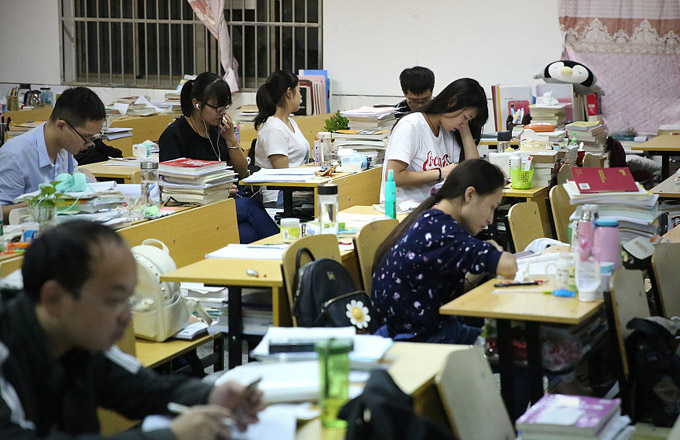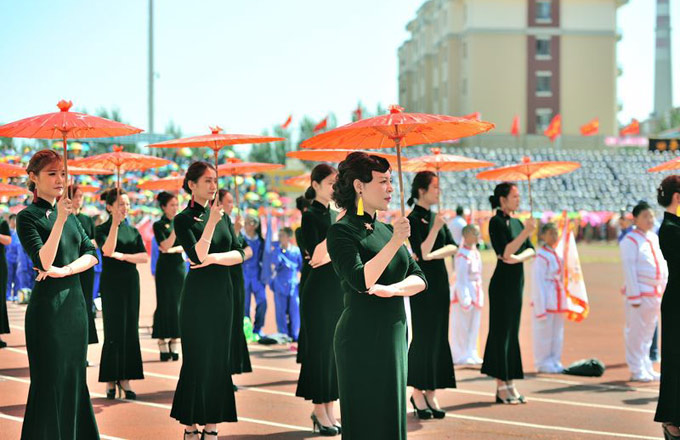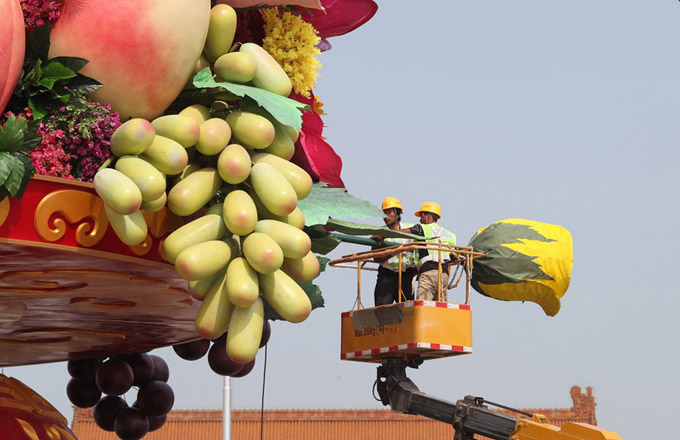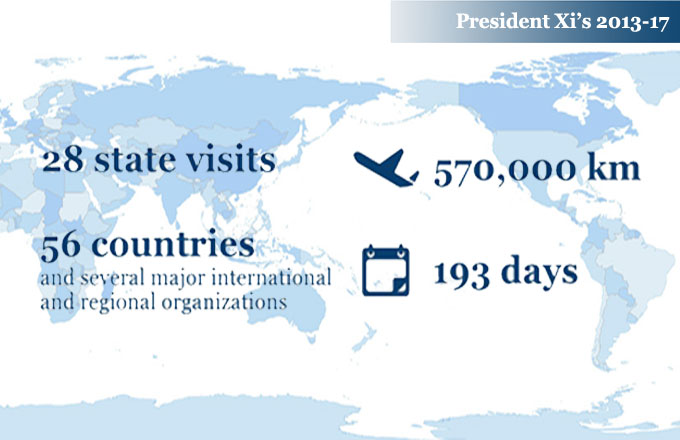Fruit trees turn wasteland to farmland in Aksu
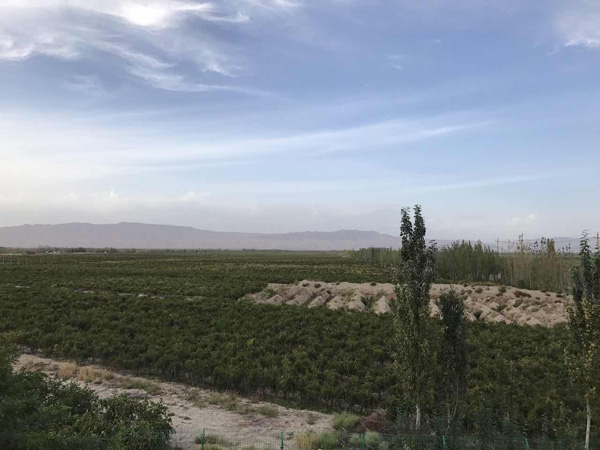 |
|
The date trees of the Kekeya green project in Aksu, southern Xinjiang on Sept 21, 2017. [Photo by Liu Wei/chinadaily.com.cn] |
With regular broad irrigation, water will run out quickly.
"We need to work this out. Every drop of water is valuable to us," Deng said. "That's why we use water-saving irrigation, which only takes 300 to 400 cubic meters per acre for a year, one-tenth of the regular amount."
Deng believes this experimental approach is efficient, considering precipitation for a whole year is less than 100 millimeters, while the amount of evaporation for a year can reach 3,000.
"Our goal is to use less water to irrigate more field," he said.
The green project has paid off well.
Guomantang, the company that works with the local government, maintains 6,800 acres of date trees and 4,000 acres of walnut trees as part of the green project.
Each year, the company provides 50,000 to 70,000 temporary jobs and 300 permanent ones for local people during the harvest season. This way, workers can stay near where they live for employment.
According to Deng, the company pays out 10 million yuan ($1.42 million) in salary for the labor, which helps the locals live a better life. The average annual income from the fruit trees for a local farmer can reach 10,700 yuan.
He also said the quality and the output of the dates they grow now are far better than when they imported from Henan, as they created new planting patterns and processing technicques.
"Five years ago it's 100 kilograms per acre, but now it's 400," Deng said.
Thinking on next steps, Deng seems confident. " We have to plant a better variety of dates with smaller pits and thicker fruit to stand out in the competitive market. And more organic ones."




